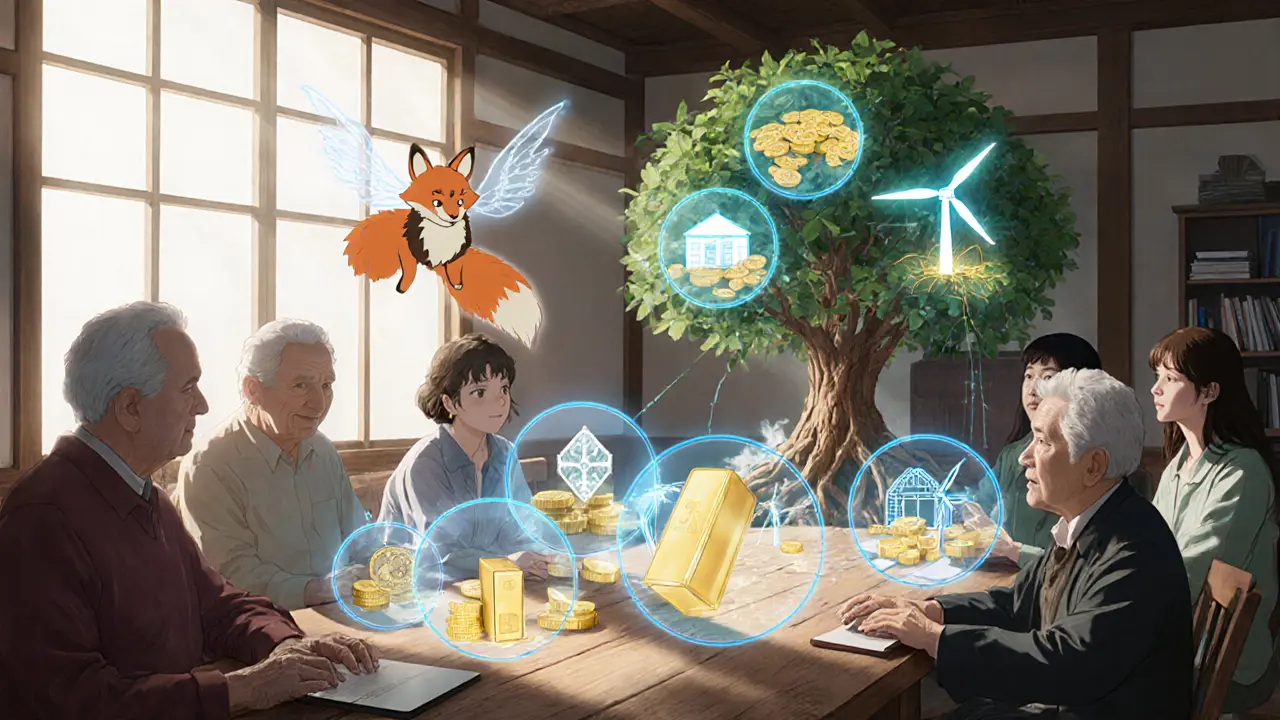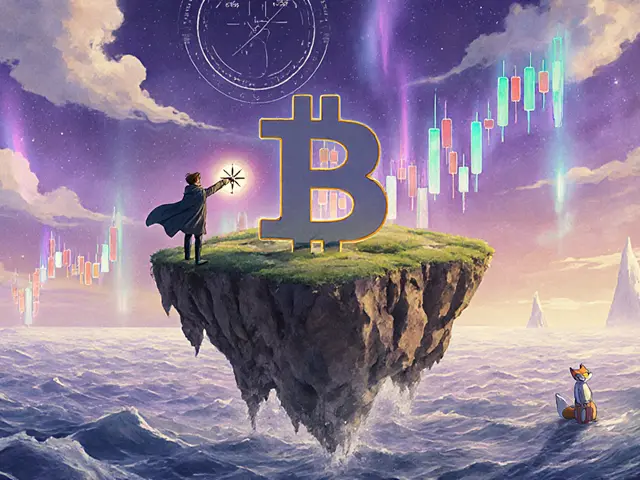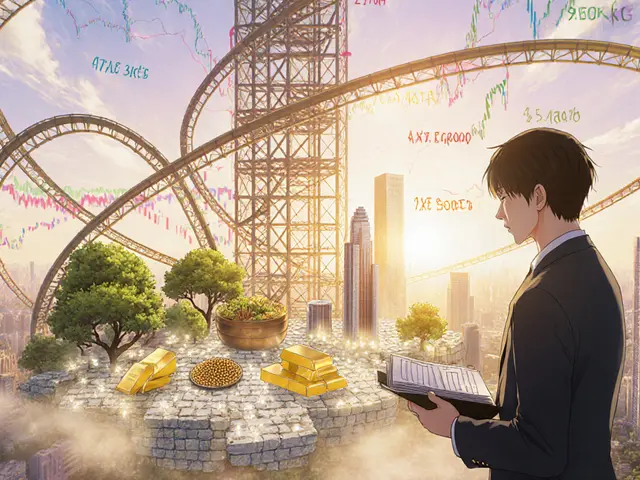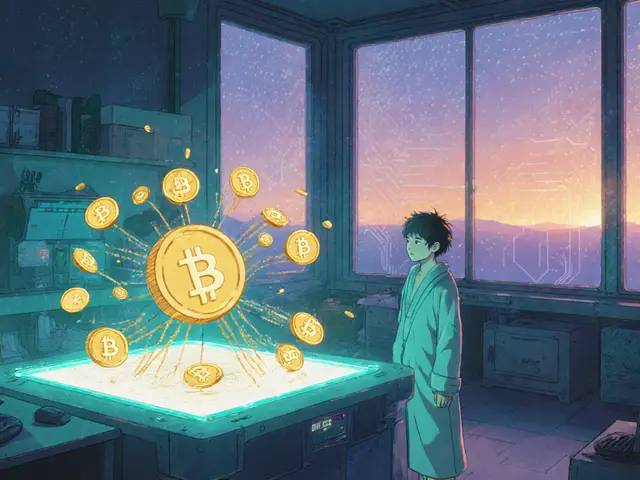Fractional Real Estate Investment Calculator
How It Works
Calculate your ownership stake and potential income from tokenized real estate. Based on the article's example: a $1 million apartment complex split into 10,000 tokens at $100 each with 4% annual yield.
Your Investment Summary
Imagine owning a piece of the Eiffel Tower, a share in a Manhattan office building, or a fraction of a $100 million bond portfolio-all as digital tokens on your phone. This isn’t science fiction. It’s already happening. Security token markets are turning real-world assets like real estate, stocks, and commodities into programmable digital assets, and the scale of this shift is about to explode. By 2030, the value of tokenized assets could hit anywhere from $2 trillion to $30 trillion. That’s not a typo. Whether you’re an investor, a tech enthusiast, or just someone trying to understand where money is headed, this is the most important financial transformation you’re not talking about yet.
What Exactly Are Security Tokens?
Security tokens are digital representations of traditional financial assets. Think of them as modern-day stock certificates, but built on blockchain. When you buy a security token, you’re not just holding a piece of code-you’re owning a legally recognized claim on an underlying asset. That could be 0.001% of a commercial building, a slice of a music royalty stream, or a bond issued by a mid-sized company. Unlike cryptocurrencies like Bitcoin or Ethereum, which are native to their own networks, security tokens are tied to real value outside the blockchain. They’re regulated. That’s the big difference from ICOs in 2017. The U.S. Securities and Exchange Commission (SEC) made it clear: if a token represents ownership, profit-sharing, or voting rights, it’s a security. That means issuers must follow rules-file paperwork, disclose risks, and verify investors. It’s not glamorous, but it’s what makes this market sustainable. No more pump-and-dump schemes. Just clean, compliant, fractional ownership.Why Is This Growing So Fast?
Three things are driving this: regulation, institutions, and technology. First, regulatory clarity in the U.S. gave the market a green light. Before 2020, no one knew if security tokens were legal. Now, companies like BlackRock and Franklin Templeton are launching tokenized funds. BlackRock’s on-chain liquidity products let institutional investors trade tokenized bonds with near-instant settlement. Franklin Templeton’s tokenized money market fund hit $1 billion in assets within months. These aren’t experiments-they’re core parts of their business now. Second, institutions control nearly 70% of the capital in this space. Retail investors are still on the sidelines. Why? Because buying a security token requires identity verification, accredited investor status, and access to compliant platforms. This isn’t Coinbase. It’s more like a digital brokerage that only works with licensed players. That’s why the market is growing quietly, not loudly. Third, blockchain tech is getting better. Interoperability protocols now let tokens move between Ethereum, Polygon, and private enterprise chains without losing their legal status. Smart contracts automate dividend payments, voting rights, and compliance checks. If you own a tokenized share of a German wind farm, your dividends auto-pay in EUR on the 15th of every month. No paperwork. No delays.Where Is the Money Going?
Real estate still leads the pack, making up over 30% of all tokenized assets in 2024. A single apartment complex in London or Miami can be split into 10,000 tokens, each worth $100. Investors in Tokyo or Nairobi can buy in without flying overseas. No more needing a local lawyer or dealing with foreign property laws. But the fastest-growing segment? Commodities. Gold, oil, and agricultural products are being tokenized at a 50% annual growth rate. Why? Because they’re easy to verify. A gold bar stored in a Swiss vault can be tagged with a unique ID, then represented by a token. Each token equals 0.1 gram. You can trade it like a stock, but it’s backed by physical metal. There’s also $200 billion in stablecoins-tokenized U.S. dollars-floating around. These aren’t securities, but they’re the plumbing of the system. They let investors move value quickly between tokenized assets without converting to fiat. That’s why the total value of tokenized real-world assets hit $250 billion in 2024. That number is about to climb.
Who’s Leading the Charge?
North America holds 36% of the market, thanks to the SEC’s clear rules and Wall Street’s appetite for innovation. But Asia Pacific is catching up fast. India’s National Payments Corporation is tokenizing RuPay cards. Singapore’s MAS is testing tokenized bonds. China is quietly building its own digital asset infrastructure behind closed doors. The Middle East and Africa are expected to grow the fastest over the next five years. Why? Because they’re skipping old systems. In Nigeria or Kenya, where banking access is patchy, tokenized assets offer a direct path to global capital. A farmer in Ghana can sell future cocoa harvests as tokens to investors in Germany. No banks. No middlemen. The tech stack is shifting too. Permissionless blockchains like Ethereum are winning over private, permissioned ones. Why? Because they’re open. Anyone can build on them. Liquidity pools are deeper. Fees are lower. You don’t need approval from a corporate gatekeeper to trade a token. That’s why 53% of growth is happening on public chains.What’s Holding It Back?
It’s not tech. It’s not demand. It’s complexity. Every country has different rules. A token that’s legal in the U.S. might be banned in France. Cross-border compliance is a nightmare. You need to verify KYC in multiple jurisdictions, handle tax reporting in different currencies, and make sure your smart contract complies with local securities laws. Most startups can’t afford that. Then there’s liquidity. Even if you own 100 tokens of a tokenized apartment building, where do you sell them? There are only a handful of regulated platforms. Trading volume is thin. That’s why institutional investors dominate-they can hold for years, waiting for markets to mature. And let’s not forget the tech itself. Smart contracts can’t fix bad data. If the title deed to a property isn’t digitized, the token is just a promise. Many real estate owners still use paper records. Bridging that gap takes time.
What’s Next? The Road to 2030
By 2030, security tokens won’t be a niche. They’ll be normal. Think of your retirement account. Instead of holding mutual funds, you’ll hold tokenized bonds, REITs, and private equity stakes-all visible on one app. Dividends auto-reinvest. Voting rights are cast with a tap. You can sell a portion of your holdings in minutes, not weeks. The biggest winners? Asset managers, real estate developers, and small businesses. A bakery in Berlin can raise €500,000 by selling tokens backed by future sales. No bank loan. No equity dilution. Just direct funding from 500 investors across Europe. Retail investors will finally get access to assets that were once locked away. A single mom in Toronto can invest $50 in a tokenized solar farm in Spain. Her returns? A steady stream of passive income, backed by real energy production. The $30 trillion forecast might sound wild. But look at the numbers: $250 billion today, $2 trillion by 2025, $13 trillion by 2030. Even the conservative estimates are 10x growth. That’s not hype. That’s math.What Should You Do Now?
If you’re an investor: Start learning. Follow regulated platforms like Securitize, Polymarket, or tZERO. Don’t chase unregistered tokens. Stick to those with clear legal structure and audited assets. If you’re a business owner: Think about tokenization as a funding tool. Can your asset-equipment, inventory, intellectual property-be fractionalized? Start small. Tokenize a single product line. Test the waters. If you’re just curious: Watch how real estate and commodities move. Those are the easiest entry points. The next big thing won’t be another crypto coin. It’ll be a tokenized piece of something real. This isn’t about replacing banks. It’s about making finance faster, fairer, and open to everyone. The future of money isn’t just digital. It’s tangible. And it’s already here.Are security tokens the same as cryptocurrencies like Bitcoin?
No. Bitcoin is a native cryptocurrency with no underlying asset. Security tokens represent ownership in real-world assets like real estate, stocks, or bonds. They’re regulated by financial authorities and must comply with securities laws. Bitcoin is speculative. Security tokens are backed by tangible value.
Can regular people buy security tokens?
Yes, but it’s not easy. Most platforms require you to be an accredited investor-meaning you earn over $200,000 annually or have a net worth of $1 million. Some newer platforms are opening up to non-accredited investors under specific exemptions, like Regulation A+ in the U.S. But you’ll still need to pass identity checks and complete compliance forms. It’s not like buying Bitcoin on Coinbase.
Why is real estate the biggest segment in security token markets?
Real estate is illiquid and expensive. A $5 million building is impossible for most people to buy outright. Tokenization breaks it into smaller pieces-$100, $500, even $10 shares. Investors worldwide can buy in without owning property physically. Plus, real estate generates steady income through rent, which can be automatically distributed via smart contracts. That makes it ideal for tokenization.
What’s the difference between a security token and a utility token?
A utility token gives you access to a service or product-like a token that lets you use a decentralized cloud storage network. A security token represents ownership, profit rights, or voting power in an asset or company. Utility tokens are not regulated as securities. Security tokens are. That’s why security tokens require KYC and legal filings, while utility tokens often don’t.
Is this just a bubble waiting to burst?
It’s not a bubble-it’s infrastructure. Unlike crypto speculation in 2017, security tokens are tied to real assets with cash flow. BlackRock, Franklin Templeton, and major banks aren’t betting on hype. They’re building systems to manage trillions in assets. The growth might slow if regulations tighten, but the underlying shift-from paper certificates to blockchain ownership-is irreversible.






